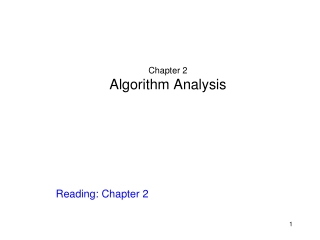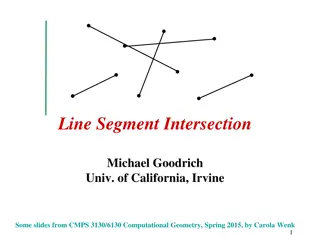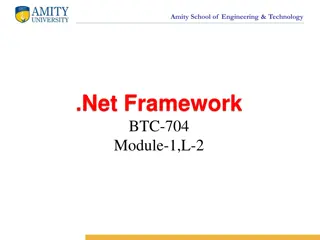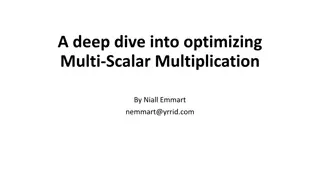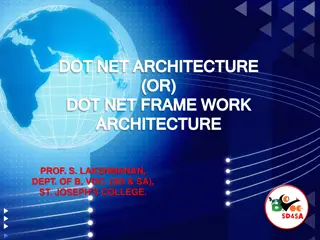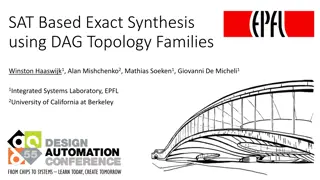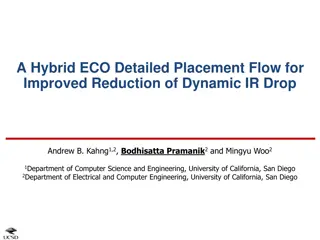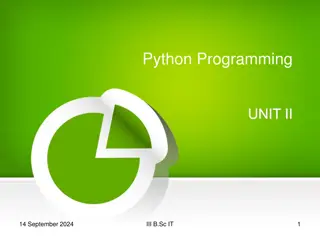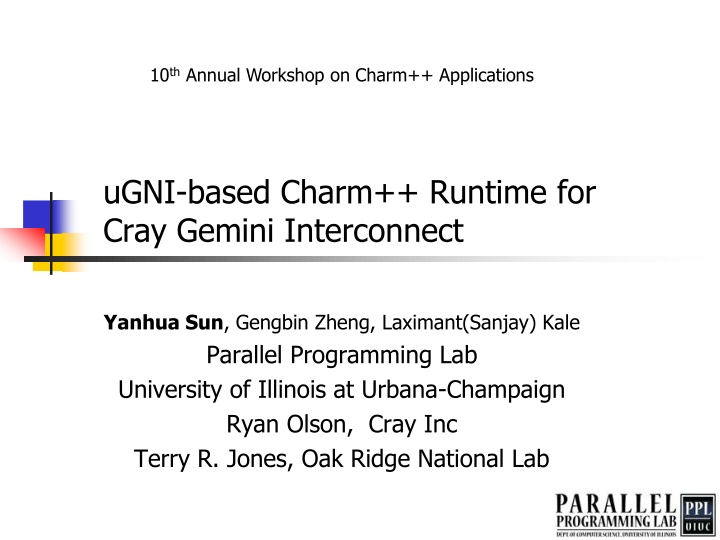
Workshop on Exploiting Charm++ Programming Model for Gemini Interconnect
Explore how to achieve optimal performance for applications on modern interconnects using the Charm++ programming model. Learn about the design of uGNI-based Charm++ for the Cray Gemini Interconnect, along with optimizations for improved performance.
Download Presentation

Please find below an Image/Link to download the presentation.
The content on the website is provided AS IS for your information and personal use only. It may not be sold, licensed, or shared on other websites without obtaining consent from the author. If you encounter any issues during the download, it is possible that the publisher has removed the file from their server.
You are allowed to download the files provided on this website for personal or commercial use, subject to the condition that they are used lawfully. All files are the property of their respective owners.
The content on the website is provided AS IS for your information and personal use only. It may not be sold, licensed, or shared on other websites without obtaining consent from the author.
E N D
Presentation Transcript
10th Annual Workshop on Charm++ Applications uGNI-based Charm++ Runtime for Cray Gemini Interconnect Yanhua Sun, Gengbin Zheng, Laximant(Sanjay) Kale Parallel Programming Lab University of Illinois at Urbana-Champaign Ryan Olson, Cray Inc Terry R. Jones, Oak Ridge National Lab
Motivation Modern Interconnects are complex Challenging to obtain good performance for applications with various communication patterns Multiple programming models/languages are developed 2
Motivation How to attain good performance for applications in alternative models on different interconnects ? 3
Motivation How to attain good performance for applications in alternative models? Focus: Exploit the performance of Charm++ programming model on Gemini Interconnect 4
Why not MPI-based Charm++ It works Not best one Unnecessary features in MPI lead to overhead Data interaction pattern in Charm++ is different from MPI Only sender-involving 5
Outline Overview of Gemini and uGNI Design of uGNI-based Charm++ Optimization to improve performance Micro-benchmark and application results 7
Gemini Interconnect Upgraded from SeaStar+ Low latency (700ns) High bandwidth (8GBytes/sec) Scale to 100,000 nodes Hardware support for one-sided communication Fast Memory Access (FMA) Block Transfer Engine (BTE) 8
uGNI Two libraries Distributed Memory Applications (DMAPP) User-level Generic Network Interface (uGNI) uGNI Charm++ 9
uGNI APIs Memory Registration/de- Post FMA/BTE transactions Completion Queues 10
Lower Runtime System (LRTS) LrtsInit() LrtsSyncSend() LrtsAdvanceCommunication() 12
Design of uGNI-based Charm++ Small messages SMSG directly send with data_tag 1024 bytes default Registered memory increases linearly with maximum msg size and the number of nodes 14
Memory Pool Memory registration/de-registration costs a lot Charm++ controls all memory allocation/de-allocation 21
Memory Pool Memory registration/de-registration costs a lot Charm++ controls all memory allocation/de-allocation Register big chucks of memory Allocation/de- is from memory pool 22
Conclusion Gemini Interconnect Charm++ LRTS Interface Memory Pool Optimization Reference Yanhua Sun, Gengbin Zheng, Ryan Olson, Terry Jones, Laxmikant Kale. A uGNI-Based Asynchronous Message- driven Runtime System for Cray Supercomputers with Gemini Interconnect [IPDPS 2012] 33

